Photographs: Sukree Sukplang/Reuters Jan Harvey, Frank Tang and Siddesh Mayenkar in London/New York/Mumbai
In April, after gold dived more than $200 an ounce in two days, an unprecedented scramble to buy everything from coins to jewellery at "bargain" prices helped arrest the plunge, tempering fears of a prolonged rout.
But not this time, say dealers and jewellers, who report that consumers across the world are reluctant to buy even after a price decline of almost $200 in 10 days as investors rushed to liquidate their gold in anticipation of the Federal Reserve's scaling back its bond-buying stimulus since November 2008.
The failure of everyday consumers to rush to gold's rescue, as they did two months ago, suggests that prices may have much further to fall as investors rush to liquidate, analysts say.
...
Gold prices take a dive, but where are the buyers?
Image: Gold bars and granules are pictured at the Austrian Gold and Silver Separating Plant 'Oegussa' in Vienna.Photographs: Heinz-Peter Bader/Reuters
"The coin business is definitely a lot slower than April. They are not lining up outside of the store," Craig Sklar, owner of Ridgewood Coin & Stamp Gallery in New Jersey, said. Spot gold fell 2 per cent to below $1,200 an ounce on Thursday, its lowest level since August 2010. It is now on track for a record quarterly drop of 25 per cent.
The absence of retail or collector buying likely has many causes. Many consumers stocked up on gold in April and May, when they reckoned prices were a bargain, leaving them less money or cause to buy even more this time around.
...
Gold prices take a dive, but where are the buyers?
Image: Gold jewellery is displayed in a shop in Kathmandu.Photographs: Navesh Chitrakar/Reuters
With only two days left in the month, sales of the US Mint's American Eagle gold coins in June stand at only 47,000 ounces - one-fifth as much as in all of April, when sales hit a 3-1/2 year high. Silver Eagles sales are down 20 per cent.
"The low prices back in April caused people to bring forward demand. Now, there's no additional demand," says Ric Deverell, Head of Commodities Research at Credit Suisse. Other factors are choking demand in India and China, which buy more than half of the world's physical gold, including recent import trade restraints and a liquidity squeeze.
...
Gold prices take a dive, but where are the buyers?
Image: Gold bullion coins in the mint where they are manufactured in Midrand outside Johannesburg, South Africa.Photographs: Siphiwe Sibeko/Reuters
Although activity has picked up a bit from earlier in the month, it has been underwhelming thus far. Coin buying is "not as active as I thought it would have been," said Michael Kramer, president of Manfra, Tordella & Brookes, a major US wholesale coin dealer in New York.
In India, soaring gold import levies and a record low in the rupee against the dollar following a 40 per cent drop since 2011 dealt a double whammy to any hopes of strong physical demand in the second half of this year from India, traditionally the biggest bullion consumer.
"My June import figures are dismal," said Daman Prakash Rathod, director with Chennai wholesaler MNC Bullion.
...
Gold prices take a dive, but where are the buyers?
Image: A shop attendant displays a tray of gold bangles at a jewellery store in Singapore.Photographs: Vivek Prakash/Reuters
India recently introduced measures requiring importers to pay upfront for inventory, making it difficult for smaller jewellers with lower working capital to source supplies. The government also raised the import duty to 8 per cent in May to keep a lid on the surging current account deficit.
"It's difficult to garner capital for paying cash to importing agencies to get the stocks," Rathod said. "I analysed my costs and benefits, and considering that I felt it's not worth unless business is in big volumes."
...
Gold prices take a dive, but where are the buyers?
Image: Gold bars are displayed at the Ginza Tanaka store in Tokyo.Photographs: Yuriko Nakao/Reuters
While in dollar terms gold is now more than $100 an ounce below its April low, Indian gold futures are still 3 per cent above their cheapest that month, further discouraging price-sensitive Indian consumers.
Concerns over bank liquidity in China, which rocked stock markets in Shanghi this week, may also be weighing on gold demand in the short term, analysts said, as buyers worry about the impact of a slowdown in Chinese growth and a possible credit crunch.
"There is no buying spree," said one analyst with a physical gold investment firm in China. Some buyers are hoping prices will fall further, he said. But also some "bought too much when gold prices fell to $1,300 and now their cash is tight."
...
Gold prices take a dive, but where are the buyers?
Image: A member of Sotheby's staff holds a 14th century Central Asian gold cup with an estimated value of $48,600-81,000 in London.Photographs: Paul Hackett/Reuters
In the United States, some wholesalers see a reversal of the previous trend, with retail investors selling metal back onto the market rather than hoarding it as earlier this year.
"I am actually starting to get some calls to liquidate physical metals, and that was nowhere to be found in April," said Brad Yates, metals trader at major US refiner NTR Bullion Group in Dallas.
Eric Harris, co-owner of New York specialty jewellery store Niletti Creations, said he's bought scrap metal from customers who "want to catch the price before it drops even more."
...
Gold prices take a dive, but where are the buyers?
Image: Uncoined gold mints at the Austrian national mint in Vienna.Photographs: Lisi Niesner/Reuters
Investors, not individuals, are likely to hold the key for prices, however. The world's eight largest gold ETFs lost 530 tonnes of gold in the first half of 2013, equivalent to about 10 per cent of annual gold production.
"Net/net, the selling that we've seen over the last few weeks has been stronger than the buying that has come through from the traditional physical markets," says Michael Widmer, an analyst at Bank of America-Merrill Lynch.
"If you want higher prices, it will not necessarily come through the buy side, sales have to subside."

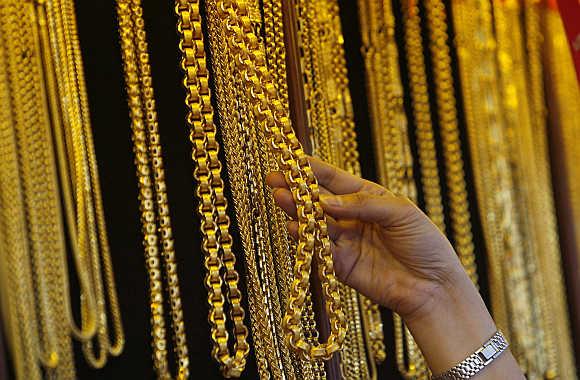
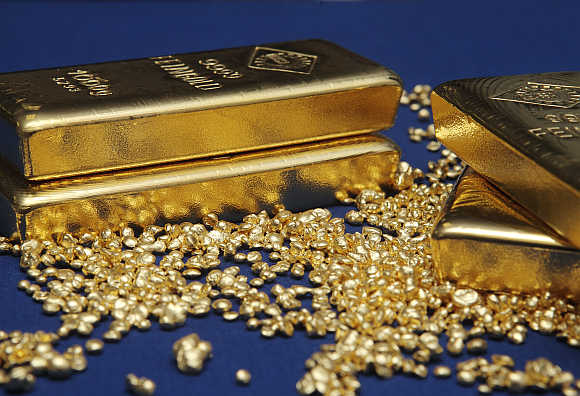
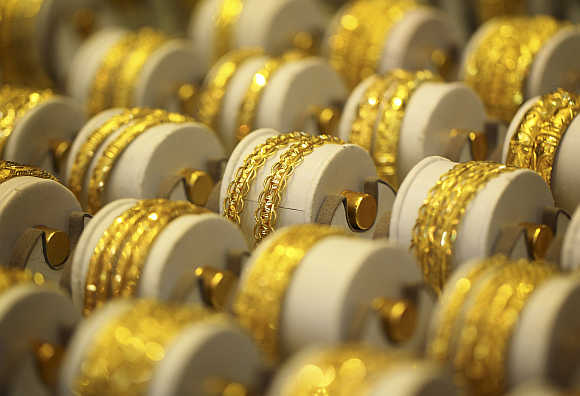
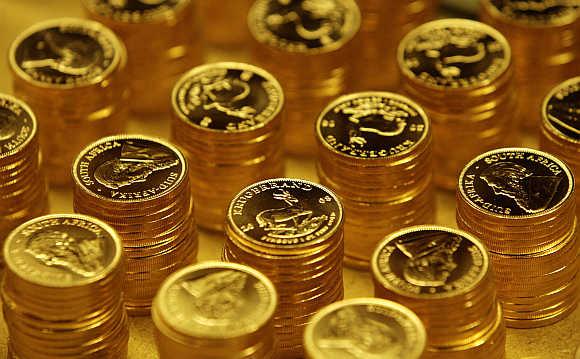

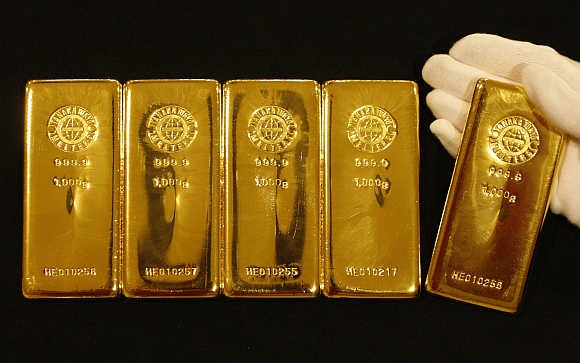
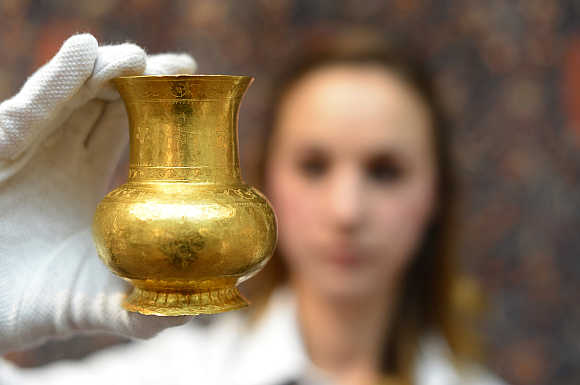


article